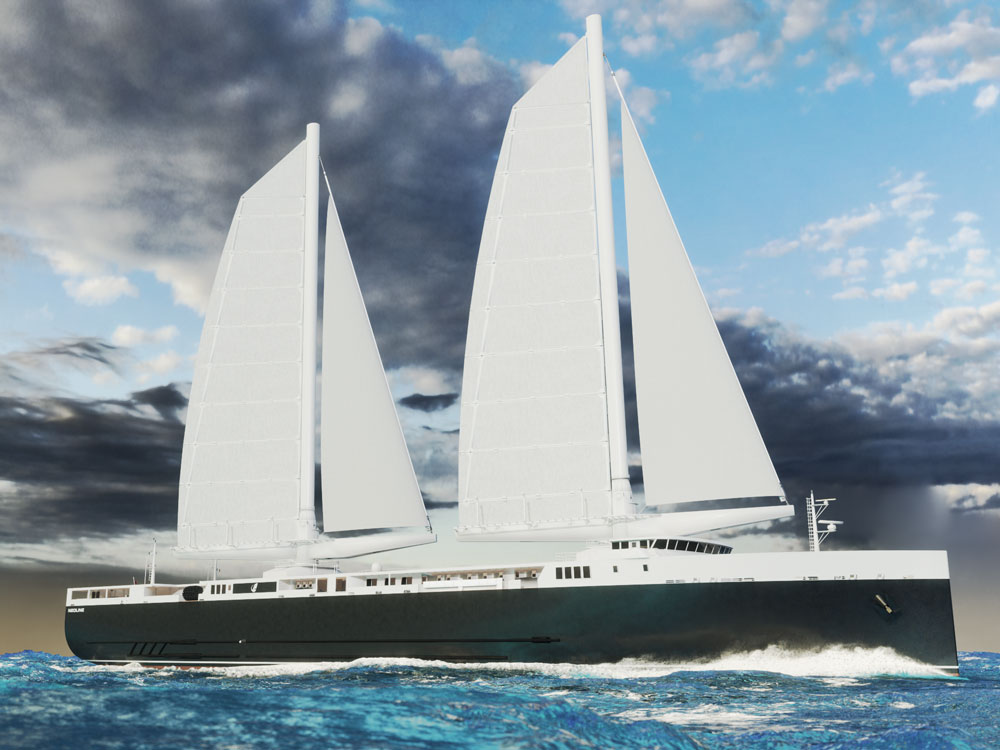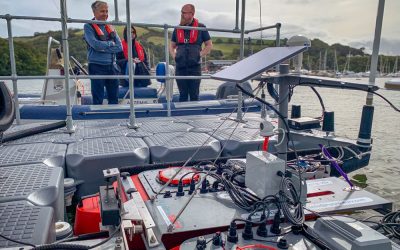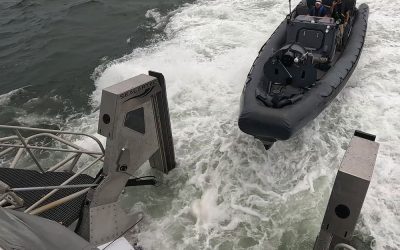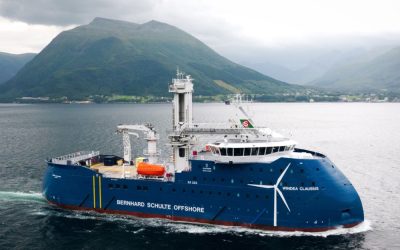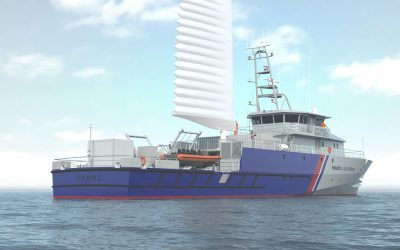Neoline’s dream is taking shape, writes Bruno Cianci. Following the January launch of Neoliner Origin, which took place at the RMK Marine facility in Tuzla, Istanbul, this 136m, sailing and diesel-electric ro-ro cargo vessel will enter service connecting the Atlantic coast of France with the port of Baltimore, making intermediate calls in St. Pierre & Miquelon and Halifax (Nova Scotia). Like the ship in question, this transatlantic route is a first of its kind, offering new destinations and involving a vast spectrum of rolling and non-standard freights, including refrigerated containers and oversized parcels.
The cargo carrier will have a commercial speed of 11knots and a monthly frequency. The distance between St. Nazaire and Baltimore will require 13 days of travel westbound and 15 days eastbound. Thanks to an extra 3knot speed margin to which the operator can resort in the event of delay, Neoline will ensure regularity and punctuality in departures and arrivals, thus meeting clients’ needs and deadlines.
Conceived in 2011, Neoline was born out of the determination of an informal group of nine professionals, led by ro-ro ship captain Michel Péry, all determined to create and optimise new propulsion methods and achieve a substantial drop in CO2 emissions. The team shared a conviction that sails are the only solution: immediately available and powerful enough to propel heavy cargo vessels. As well as exploiting the wind as its primary driving propulsion, though, the vessel is supported by auxiliary diesel-electric power, enabling the vessel to maintain its sailing schedule.
The ship is fitted with twin carbon-mast SolidSail rigs, designed by Chantiers de l’Atlantique, that can be folded down to clear bridges and to access most ports. Each mast can hoist one 1,050m2 SolidSail and one 450m2 jib (by Onesails), totalling 3,000m2 of canvas. Below surface, the ship features deep retractable anti-drift fins, designed by Fouré Lagadec, that prove efficient and particularly useful while sailing upwind.
Equipped with a 12m-wide loading ramp, Neoliner Origin can handle a wide range of parcel sizes and packaging in three loading areas (a 2,100m2 main garage, a 500m2 twin deck and a 950m2 lower garage), all weatherproofed. Its transport capacities are optimised to load both light freight (cars, pallets, etc) and oversized parcels, up to 9.8m high and 200tonnes in weight, without the need for lifting.
Neoliner Origin has two types of propulsion system: sails and a mechanical propeller. The latter comprises a controllable-pitch propeller connected to a PTI/PTO gearbox clutched to a diesel medium-speed, 3,200kW ABC engine and to a 900kW electric motor. This allows the powertrain to work efficiently in every possible configuration, and to integrate batteries in the future. Thus, there are three sail modes: exclusively sails; mechanical propulsion (mainly for manoeuvring); and hybrid.
Neoliner Origin aims to reduce its fossil fuel consumption by more than 80% compared to a same-sized conventional ship operating at 15knots. But there is more to the story, as Neoline technical manager Guilhem Péan explains: “Apart from fuel savings, our ship is much more silent than conventional motorised vessels, and therefore its impact on marine mammals and the environment is drastically lower. And of course, the less the engines and equipment are used, the less maintenance and spare parts or consumables are required. Besides, when the sails are in use, the vessel’s roll motion is dampened, and comfort thus improved.”
Neoline CEO Jean Zanuttini adds: “We are actively working on plans for other versions of Neoliner Origin. Our goal is to scale the concept and increase the capacity for cargo while progressing toward zero-emission shipping.”
For the full article, renders and technical particulars, don’t miss the May 2025 issue of The Naval Architect
